If you are in the habit of collecting coffee table books and possess a proclivity for history then Safdar Nensey’s recently published Jerusalem would serve as a worthy value addition. The Holy Land’s vivid depiction through an anthology of vintage post cards, photographs, and posters collected over a span of two decades will allow you to travel in the past without a passport that lets you explore this part of the world. If you have watched the historical drama, Farha which was based on the experience of a Palestinian girl, chances are that you would be aware of how the situation changed drastically for the Palestinians with history taking new form and shape. Each page of this book serves as a visual reminder of a bygone era and a simpler way of life, allowing readers to cherish and become acquainted with it. What’s also interesting is the fact that there are some century-old stereographs for the readers pleasure, that provide a three-dimensional effect through the use of special glasses.
The beginning of the book welcomes the reader by sharing simple yet profound words — “This book is dedicated to all who promote peace and understanding in the world.” Not many readers are in the habit of reading the foreword, but I insist that the readers of this book should not flip through the pages and skip the foreword by Iftikhar Salahuddin, but actually read his philosophical words that reflect his in-depth knowledge of history, and explains why reading the book is worthwhile. “This book is a compilation of the various postcards and photographs from my collection, which I consider to be my personal pilgrimage,’’ writes the author. The land which is sacred to Christians, Muslims, and Jews alike can be experienced through the pictorial representation which is an integral and fascinating part of this very astutely compiled coffee-table book.
The book offers an interesting overview of the city as the author describes by mentioning, “In its 5,000 or so years of existence, 16 wars have been fought over Jerusalem. It is believed that Jerusalem was destroyed twice, attacked more than 50 times, and captured and recaptured several times. While summarizing the city’s tumultuous history in numbers seems easy, describing Jerusalem’s history is difficult and taxing, as the lenses of observation remain distorted due to multiple claims and theories.’’
Similarly, the Chronology of Key Events in Jerusalem, taken from Iftikhar Salahuddin’s book, A Journey Back in Time is briefly included in this excerpt and is bound to serve as a crash course for the curious reader.
Jerusalem is known as Yerushalayim in Hebrew in what sounds like a melodious pronunciation.
The postcards which once served as keepsakes from travelling enthusiasts are extinct, almost to the point of disappearance, thus the concept becoming vintage in its own right. Should you come across one or buy some from the likes of Mohatta Palace, know that there is a gleeful old soul within which deserves to read such content.

In one of the postcards, a black and white portrayal of a street in Old Jerusalem captures the intelligently designed arches and intricately carved entrances, crafted not only for their aesthetic appeal but also for enhancing ventilation within the passageways
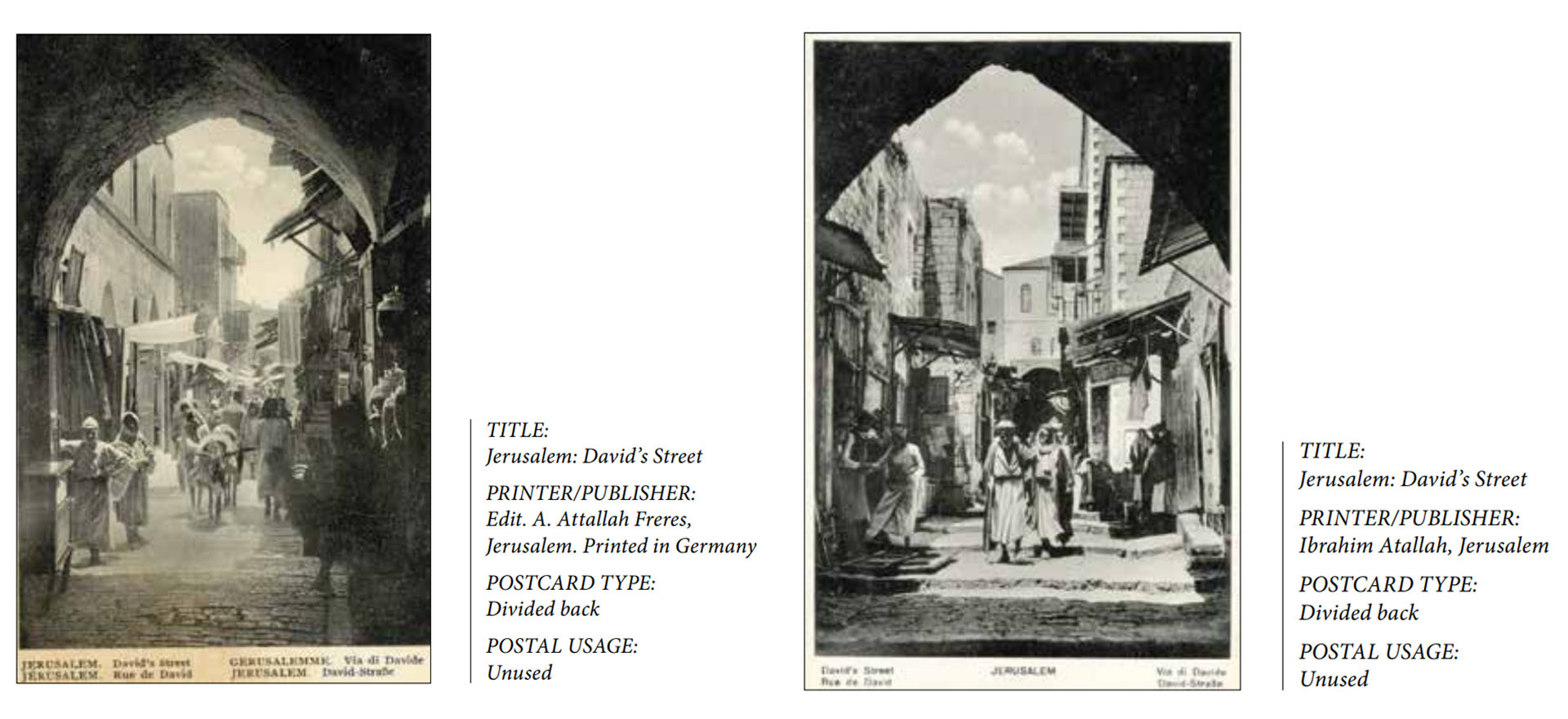
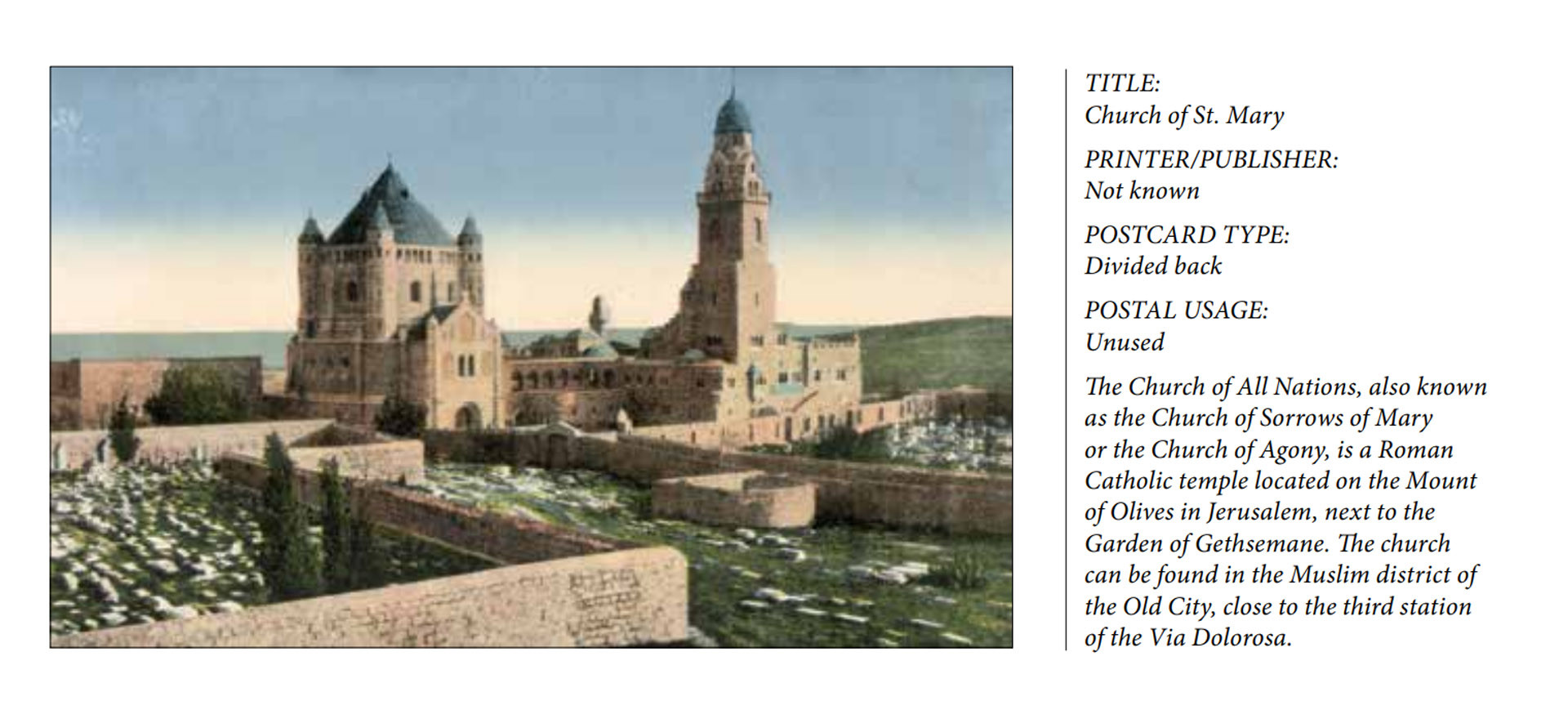
Given the assimilation of religions from the yesteryears and even today to a certain extent, mosques, churches, and synagogues used to co-exist without the need for a hostile environment. The postcard shows the Church of Sorrows of Mary or the Church of Agony, which is mentioned in some books as the Armenian Chapel of Our Lady of the Spasm, located on the Mount of Olives in Jerusalem.
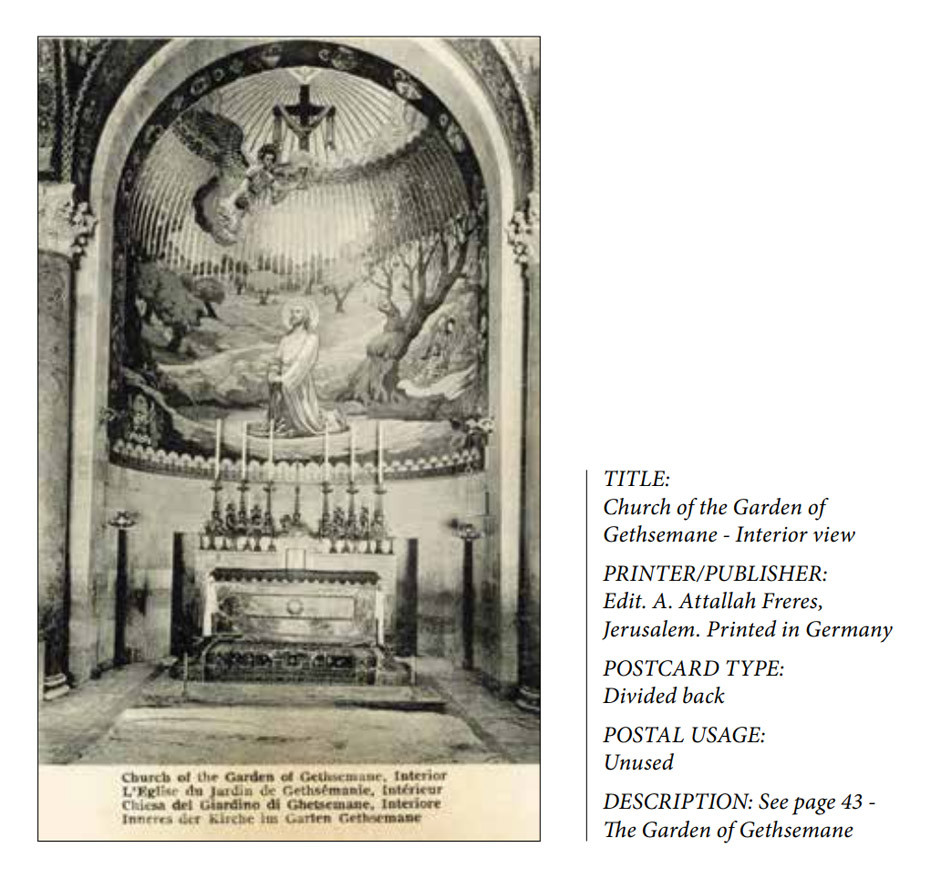
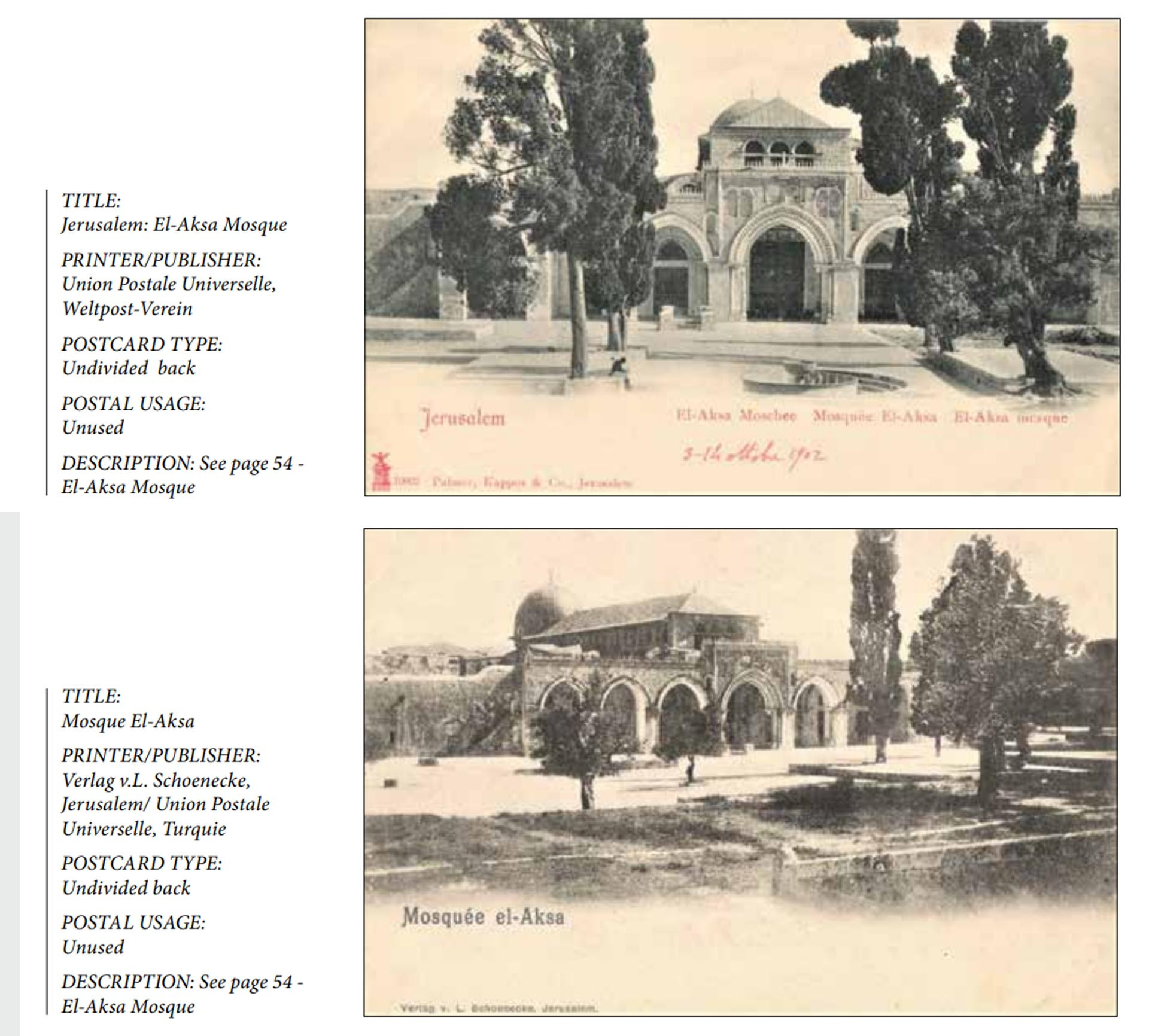

The Al Aqsa Mosque in the old city is often confused with the Dome of Rock often due to incomplete reporting and a diversion of attention. It is rather a silver-domed mosque in a 35-acre compound which is referred to as Al-Haram Al-Sharif. The mosque is the third holiest site in Islam, after Makkah and Madina
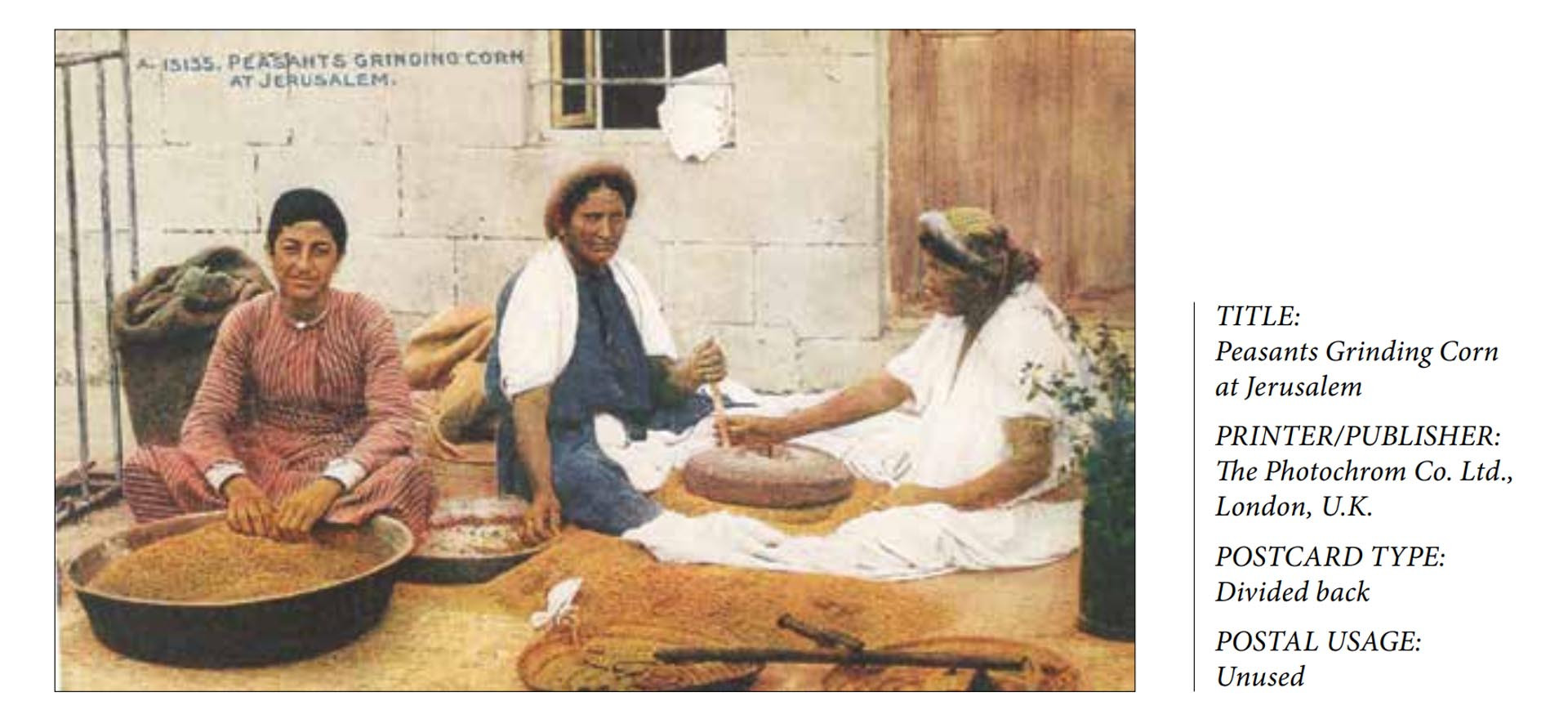
A postcard that depicts women socialising amidst kitchen chores in their courtyard, are pulverising corn just like they used to manage other cereals, a manual task which has been replaced by machines in the fast-paced world that we live in today.
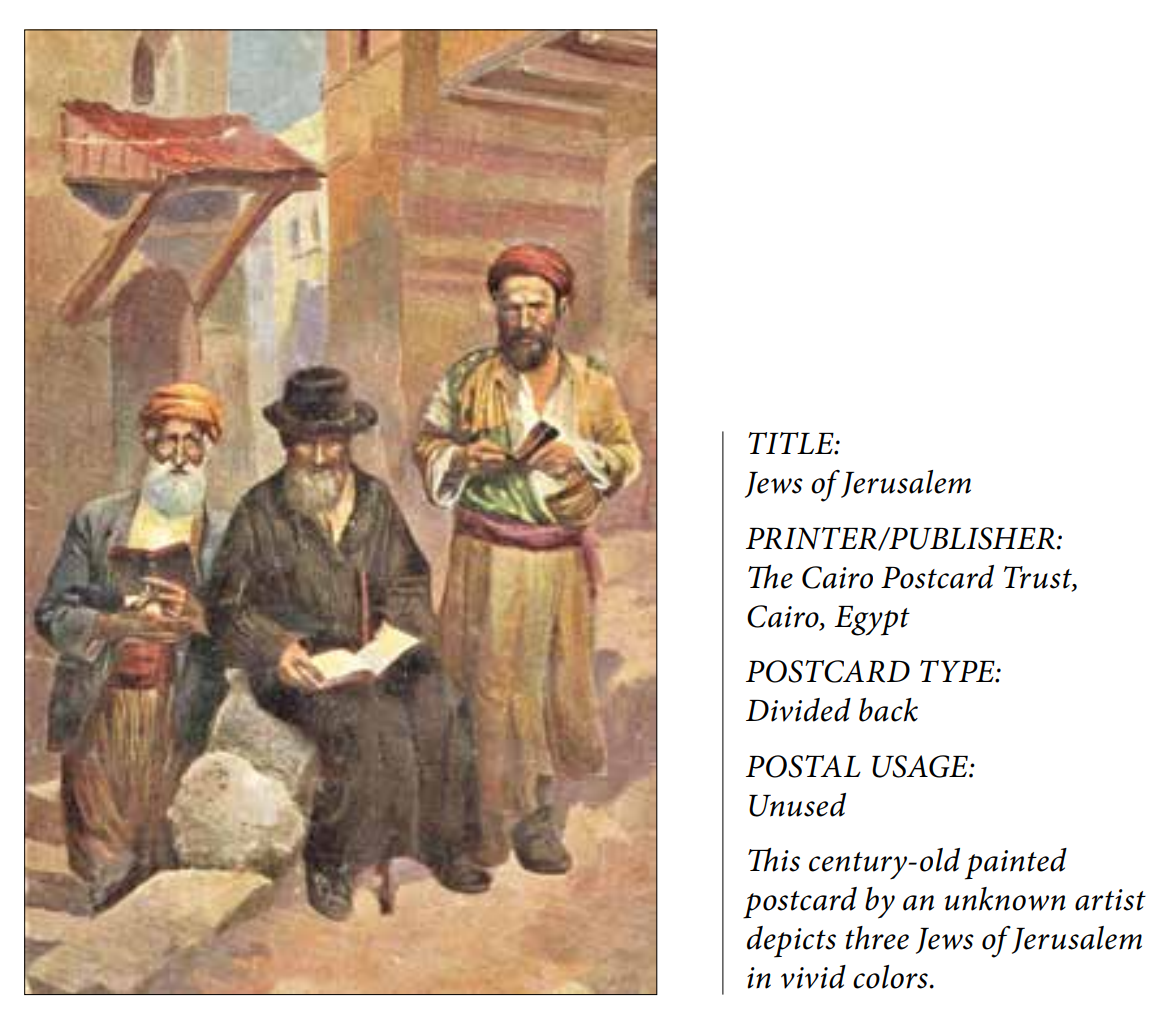
The author, given his admiration for art and culture has preserved a postcard of a painting, perhaps from the era of Realism or New Objectivity where the artist has painted three Jews in their philosophical demeanour.
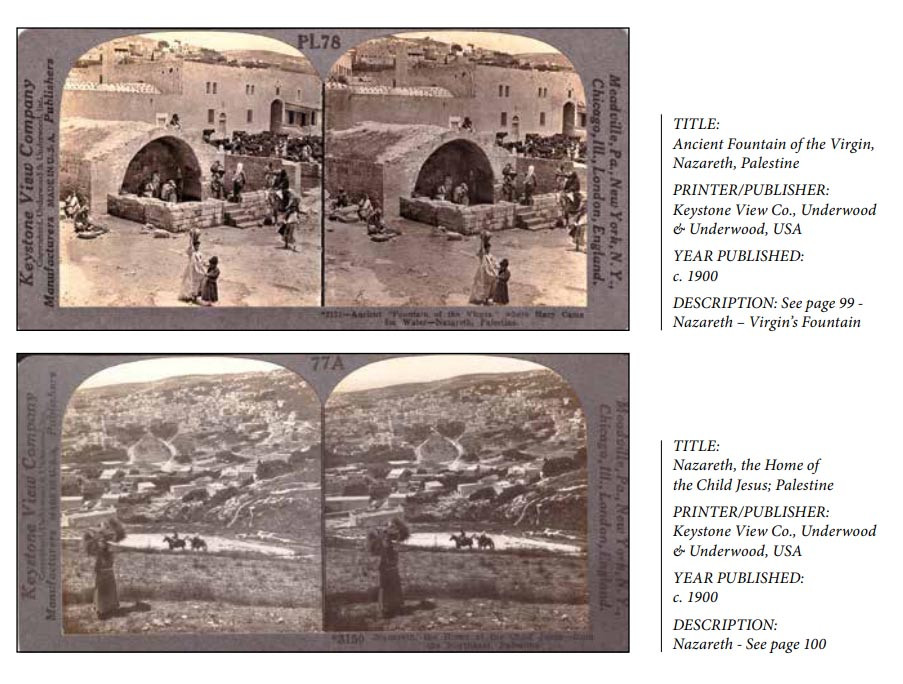
The stereographs and lithographs featured in the book are equally captivating, evoking a profound sense of nostalgia, even for those who have never visited the Holy Land or lived in that era. It's as if a time-traveling machine would be the perfect invention to complement such books.

A lithograph, invented in 1796, by the German author and actor Alois Senefelder is a printing method of planography and an outcome of the immiscibility of water and oil where printing is done with a smooth surface, be it a metal plate or a stone. The picture is the very example of this technique showing Samaria.
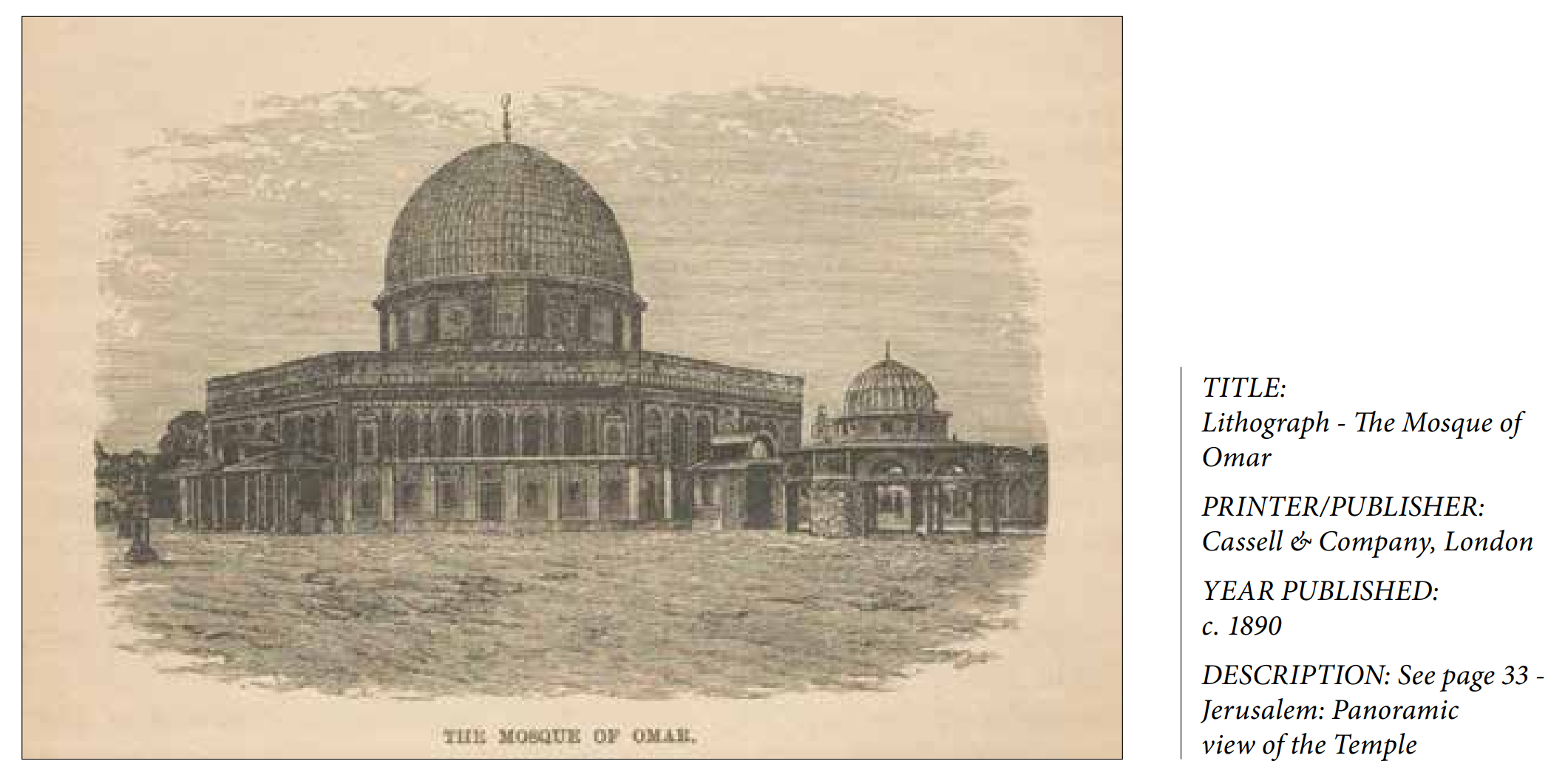
Another panoramic lithograph showcases the Mosque of Omar, printed and published by Cassell & Company, London.
All in all, those who have read the history of this region extensively would find the book resonating with their taste for historic events, places, and their visual representation while those who have not would be urged to dive deep into knowing the significance of the Holy Land further.
Heba Moeen is a communication professional, an artist and a wildlife photographer. She can be reached at moeen.hiba@gmail.com
All facts and information are the sole responsibility of the author
